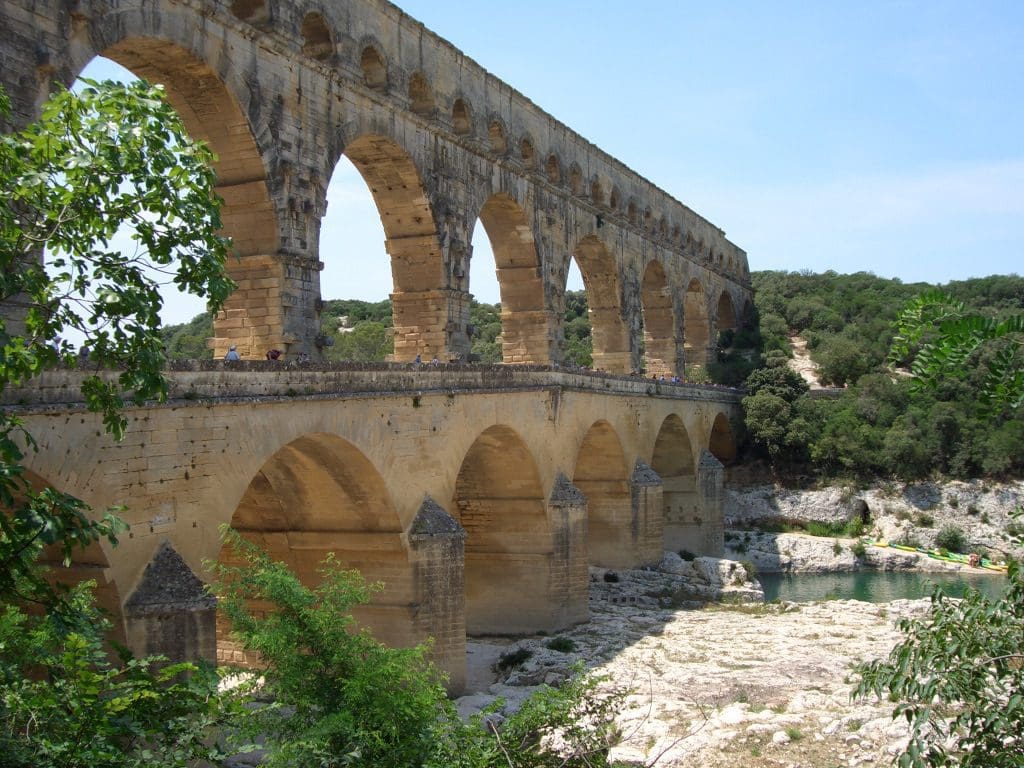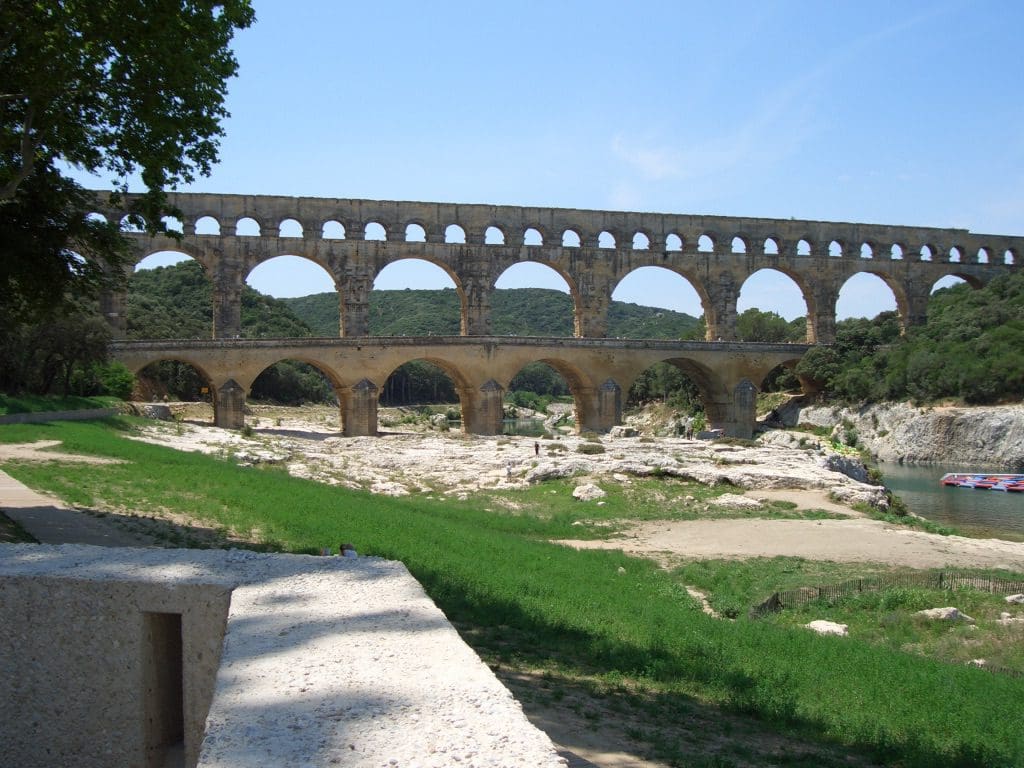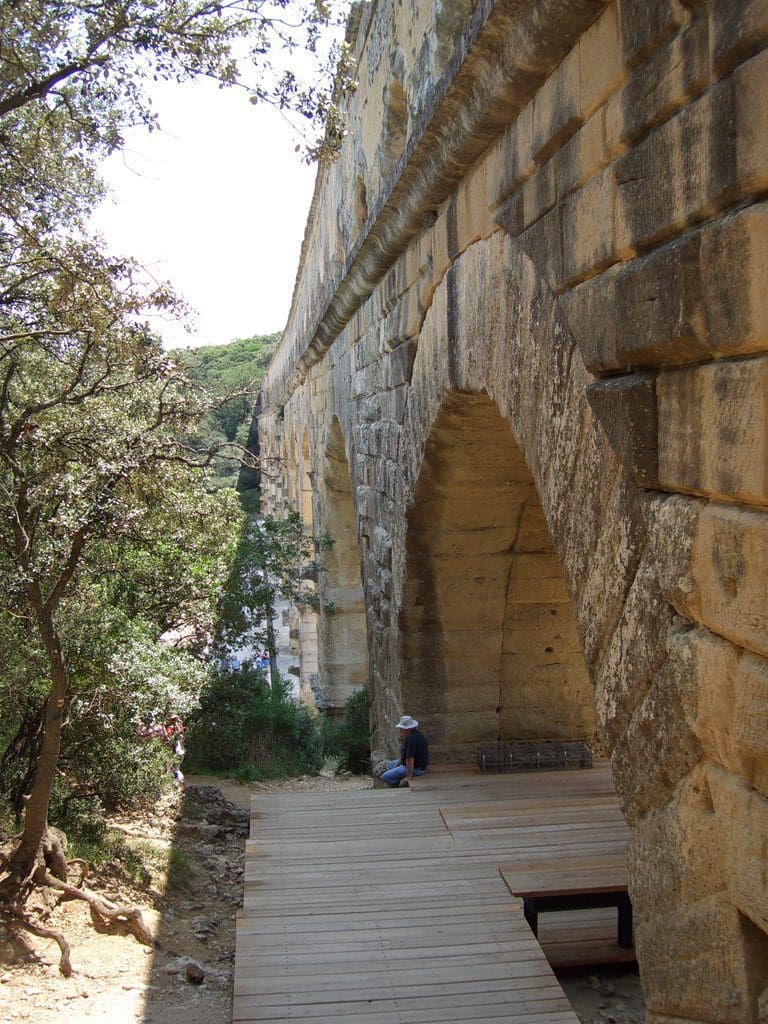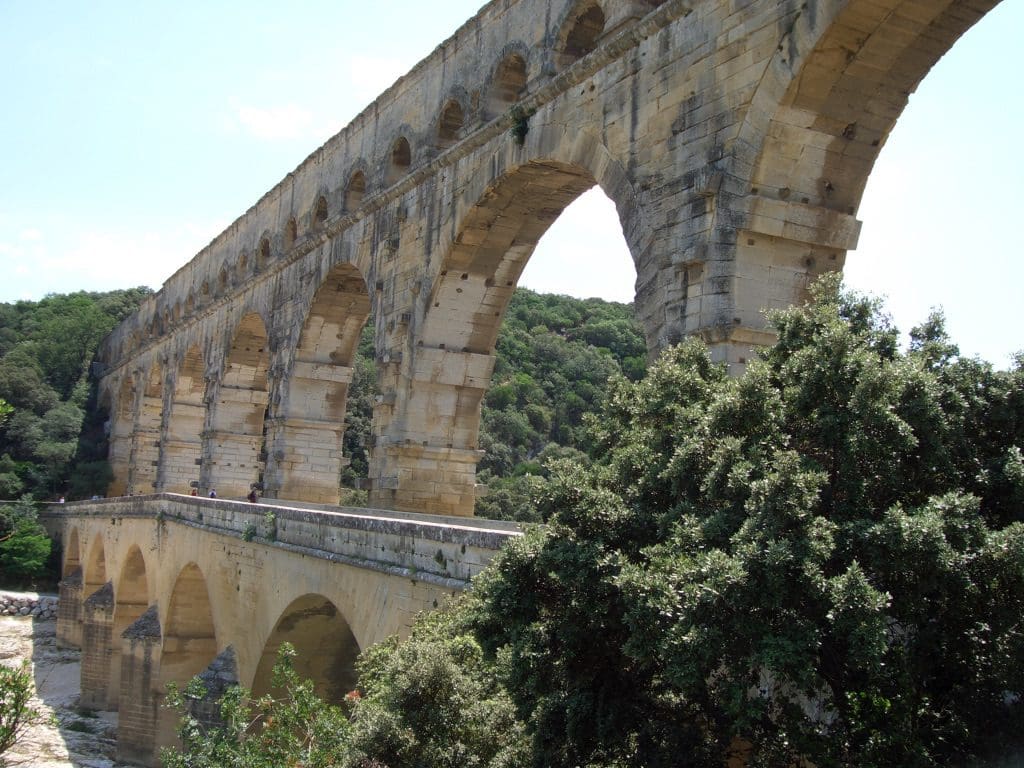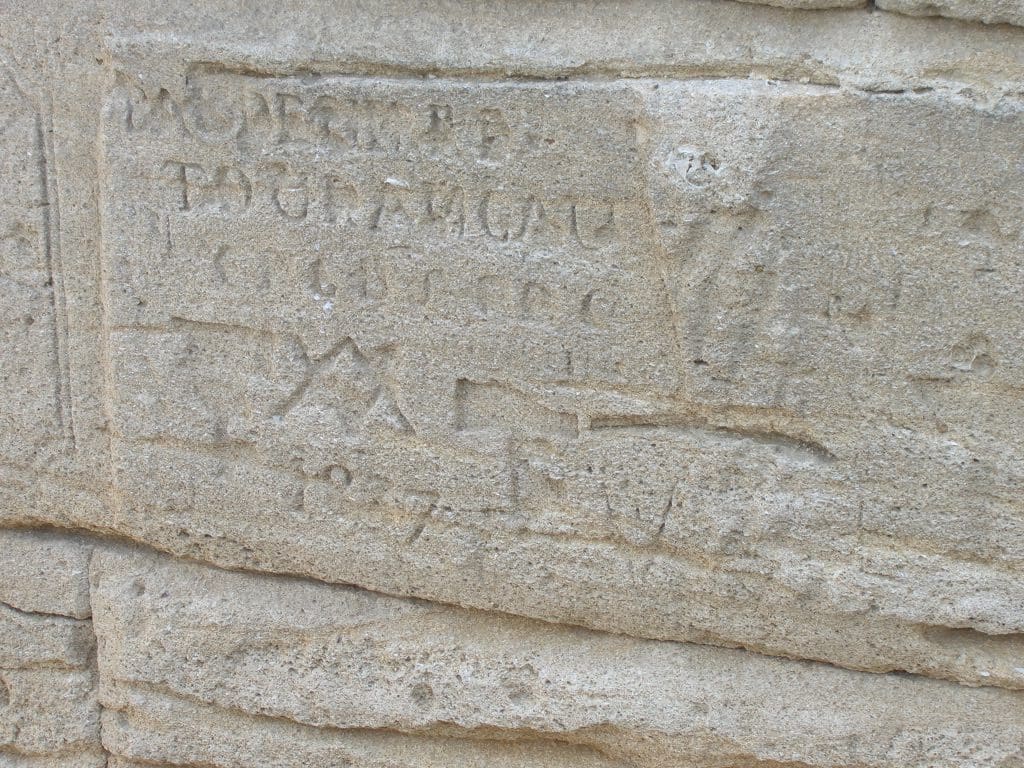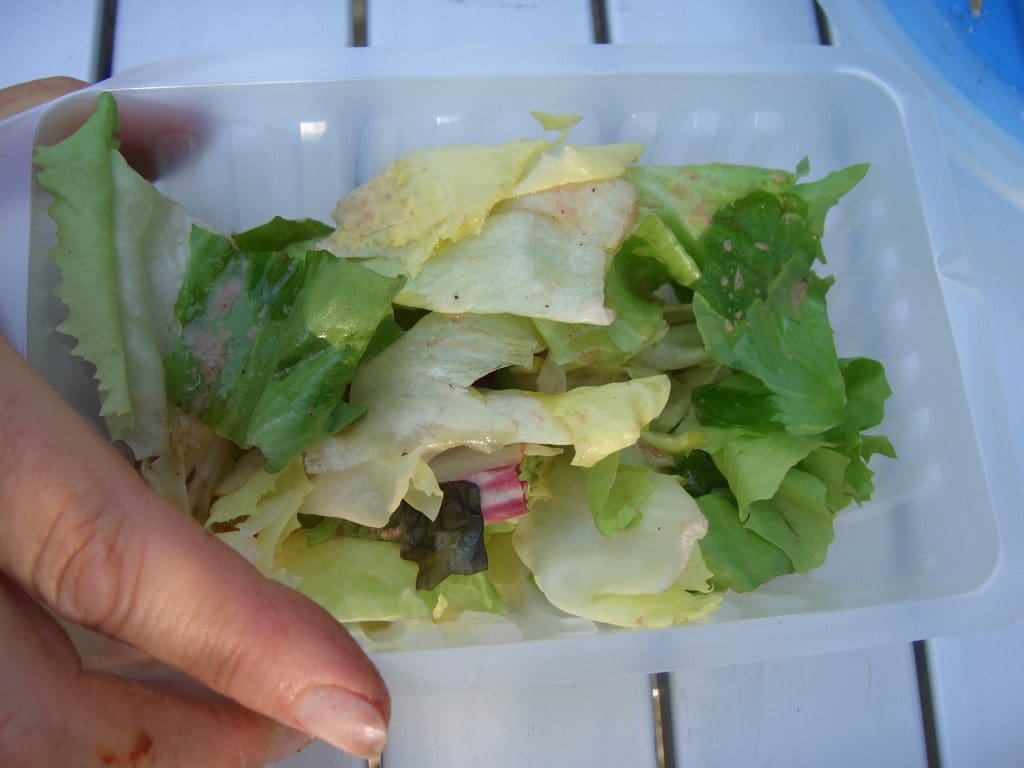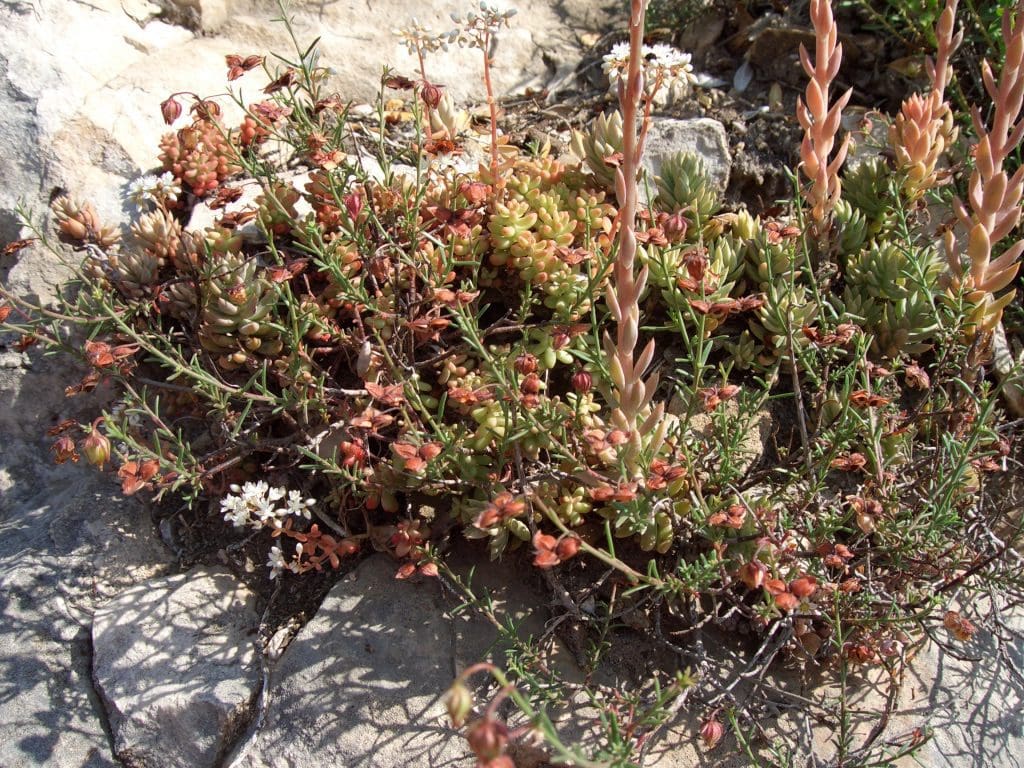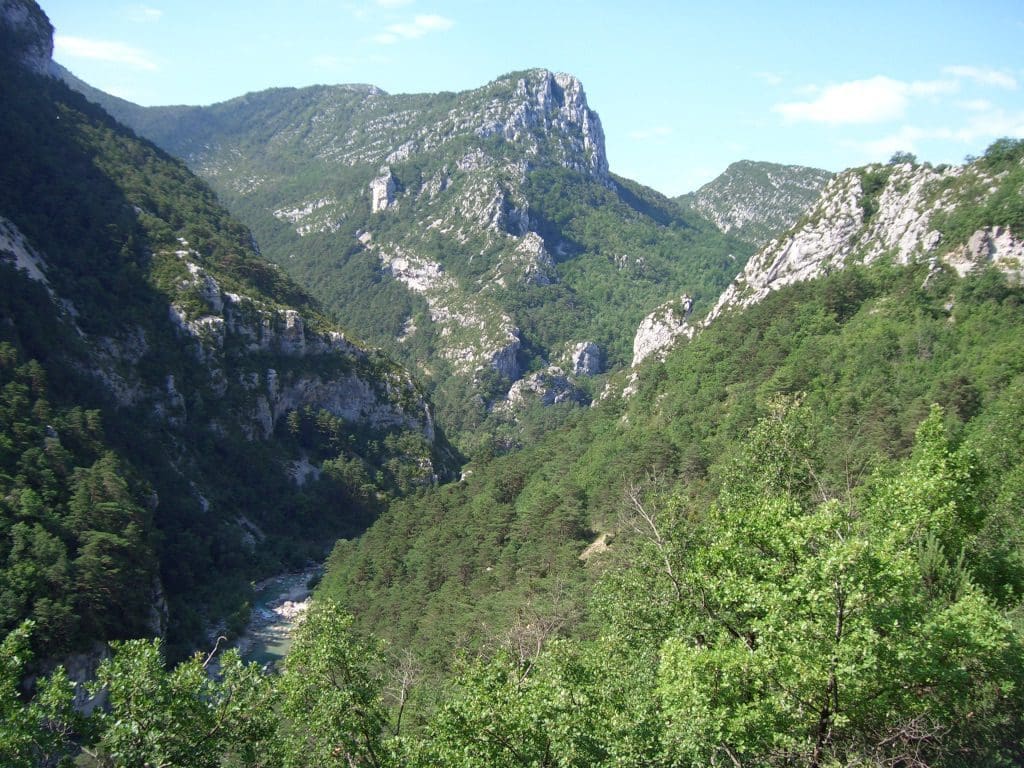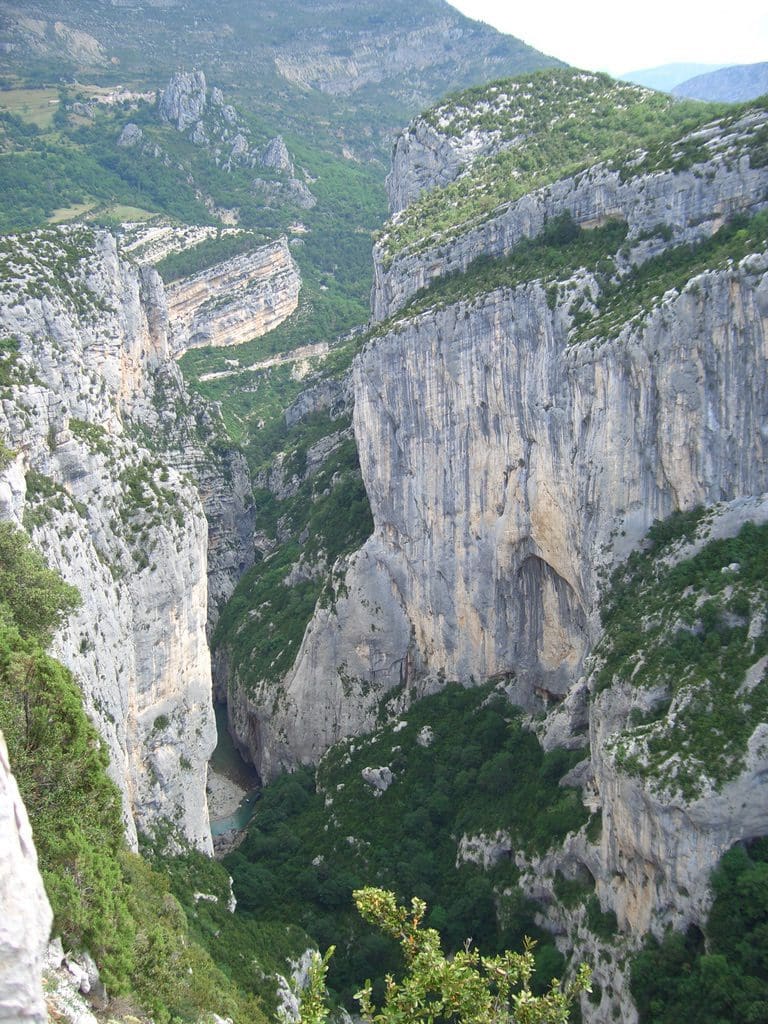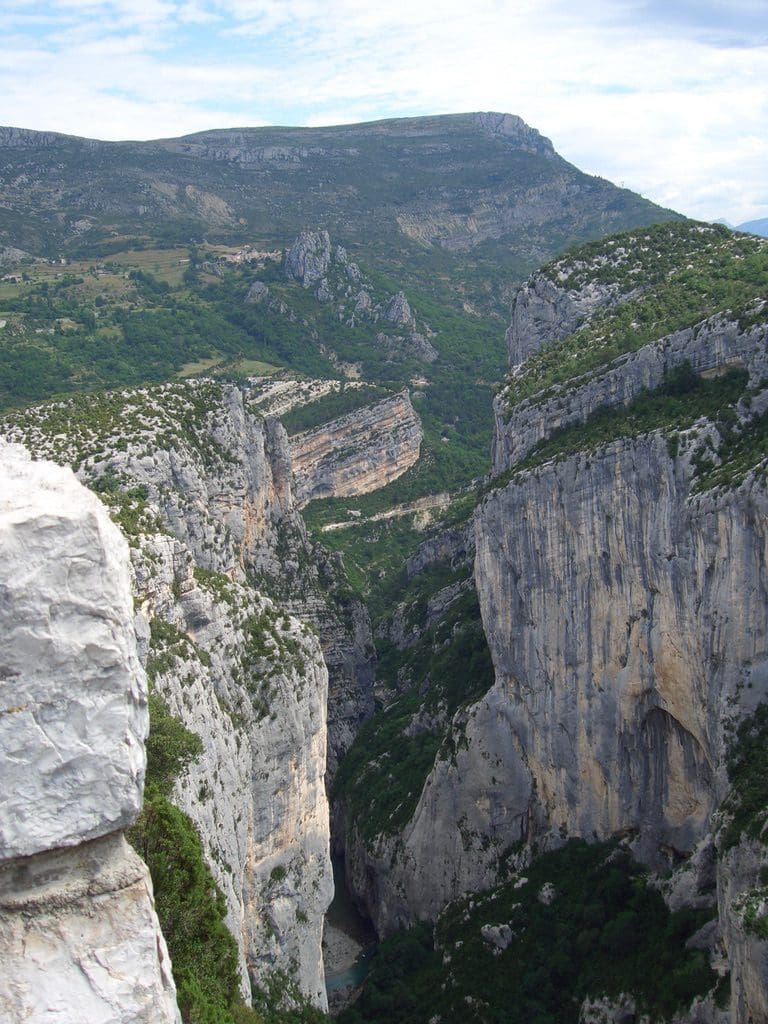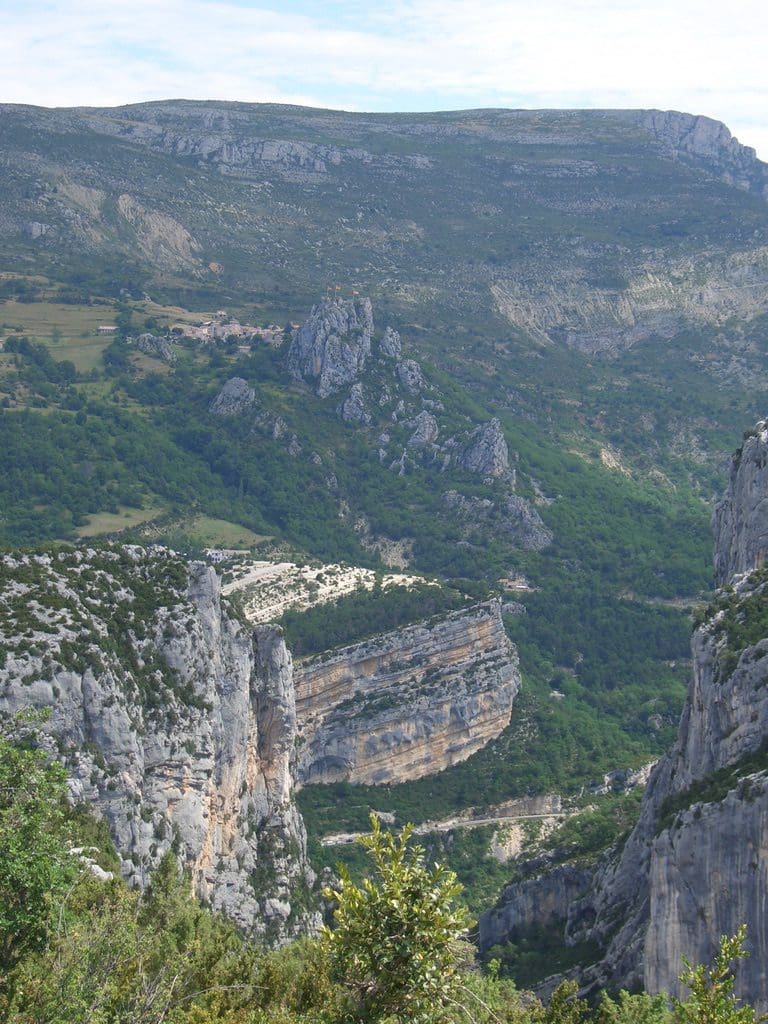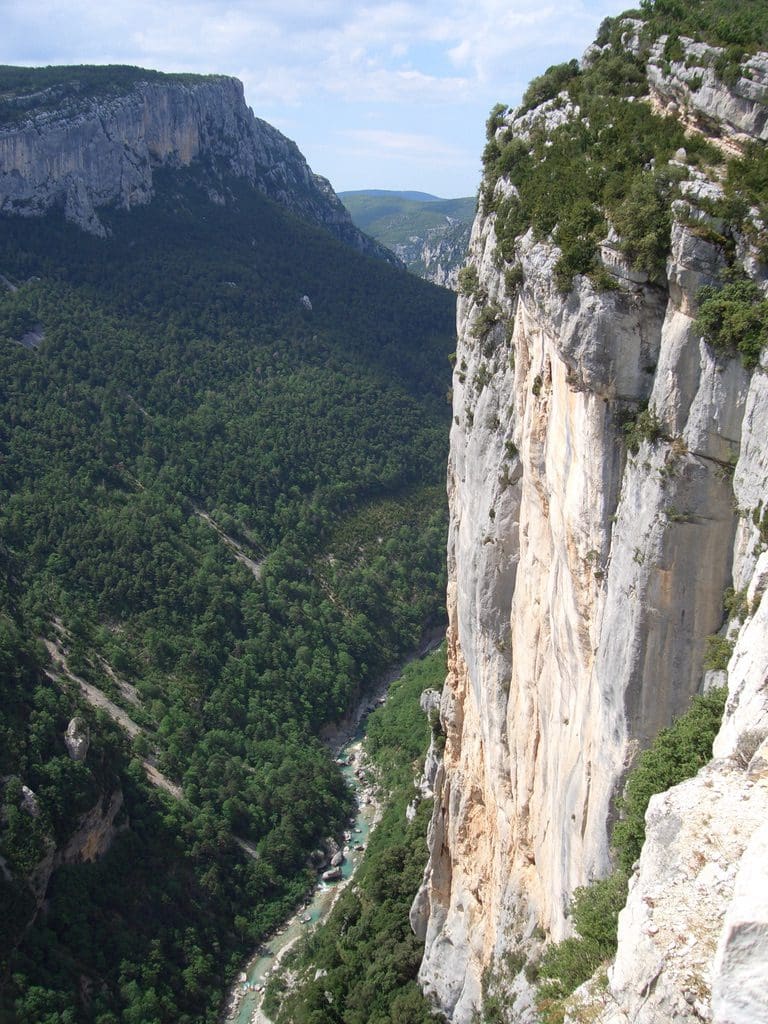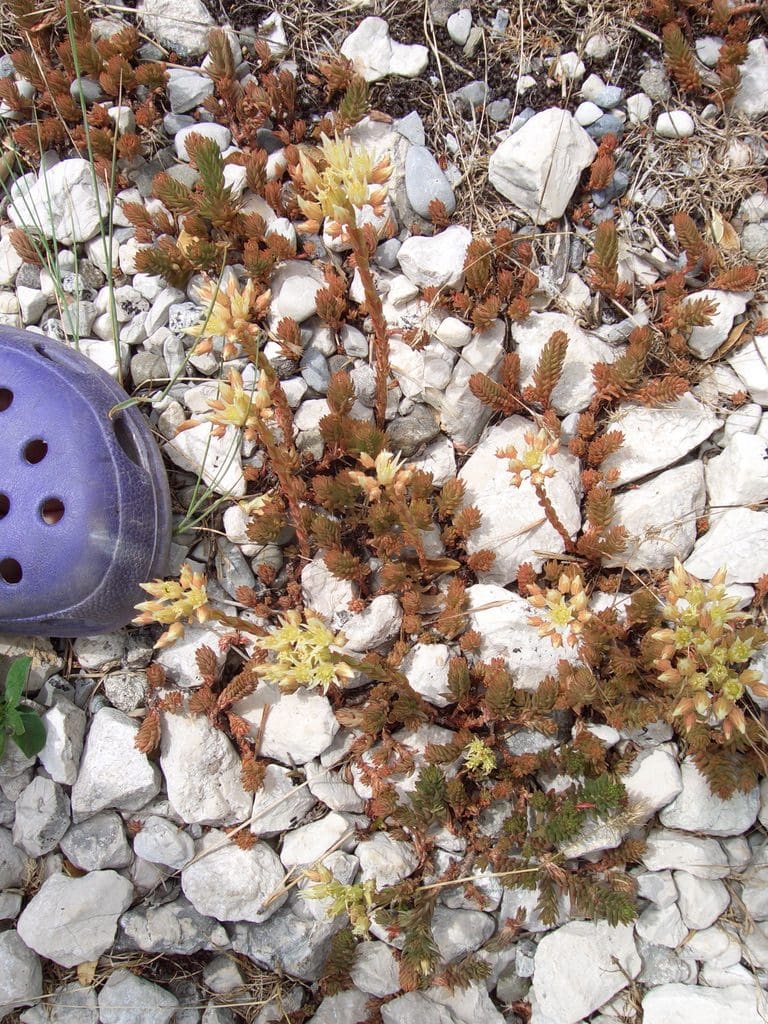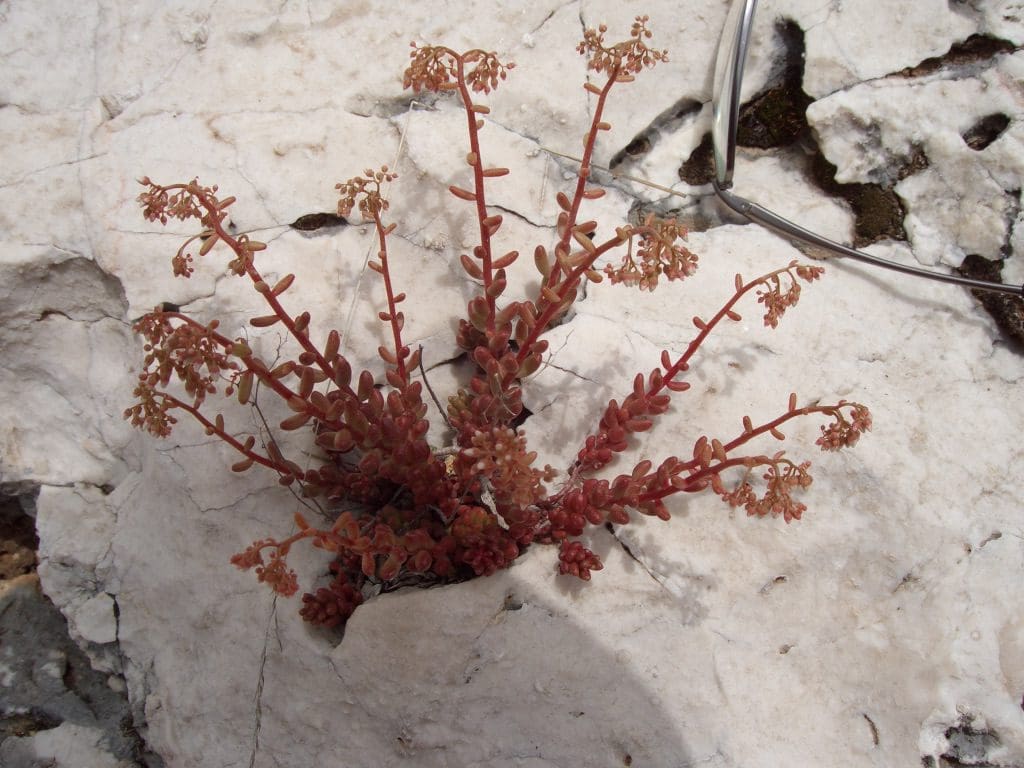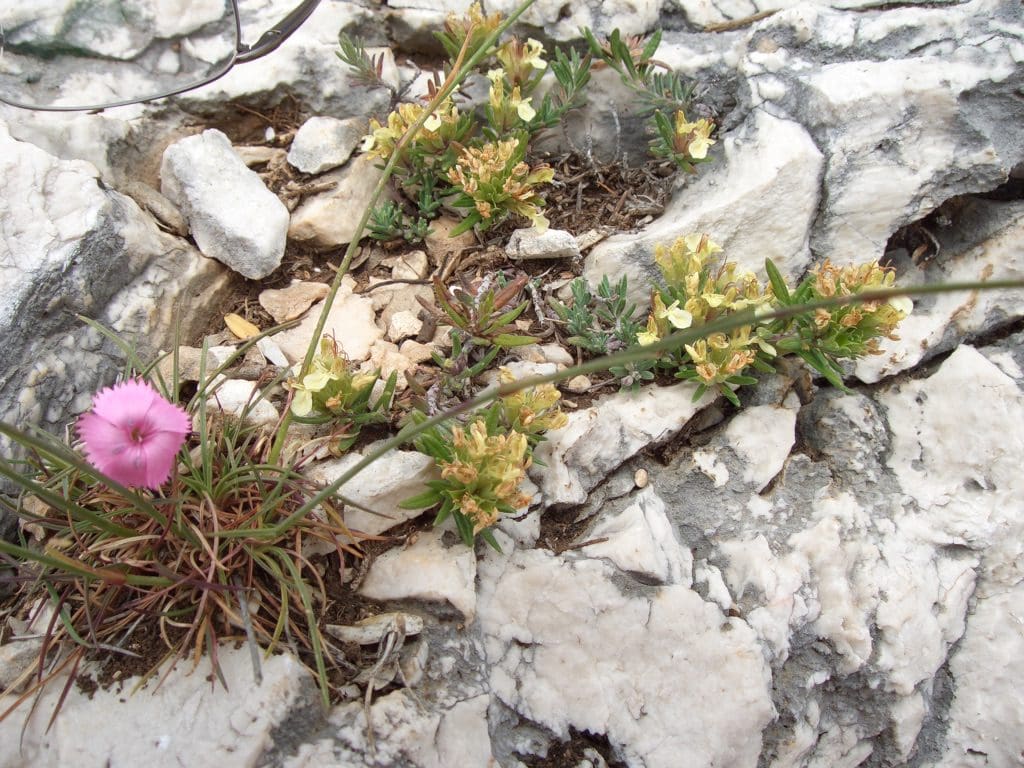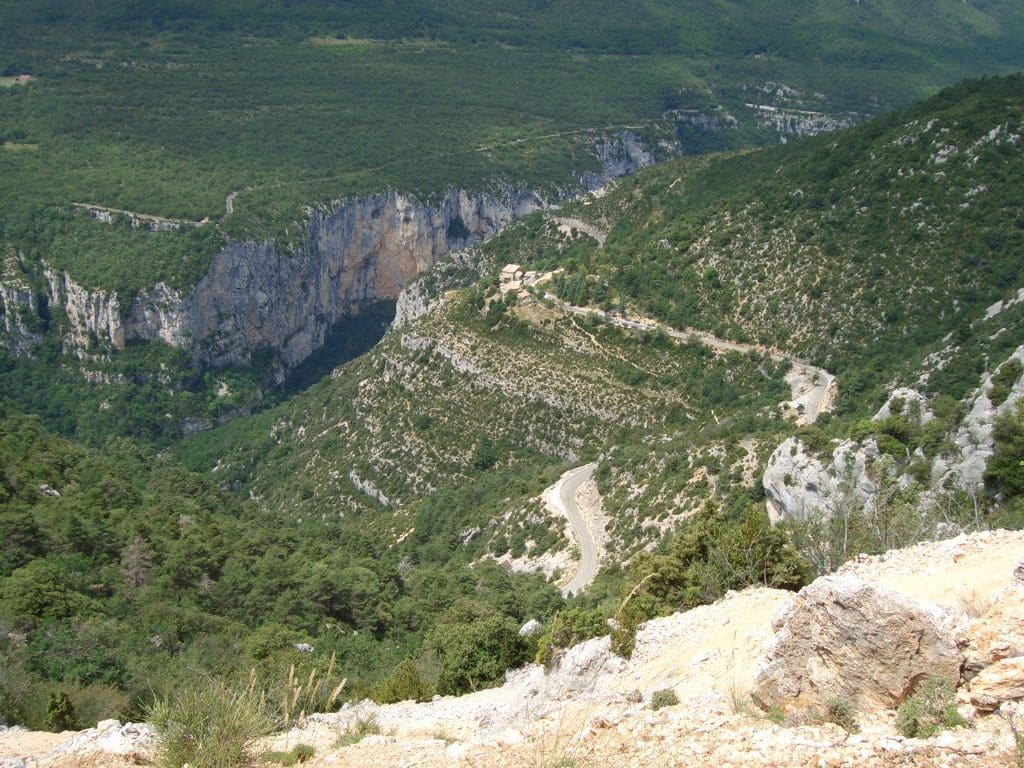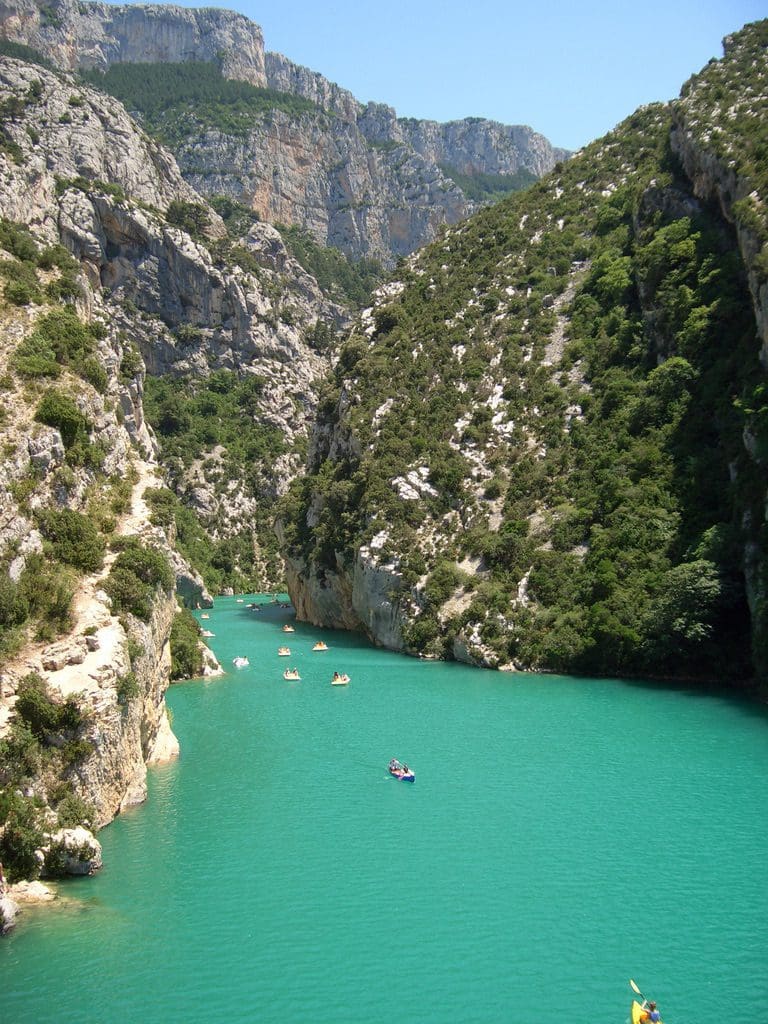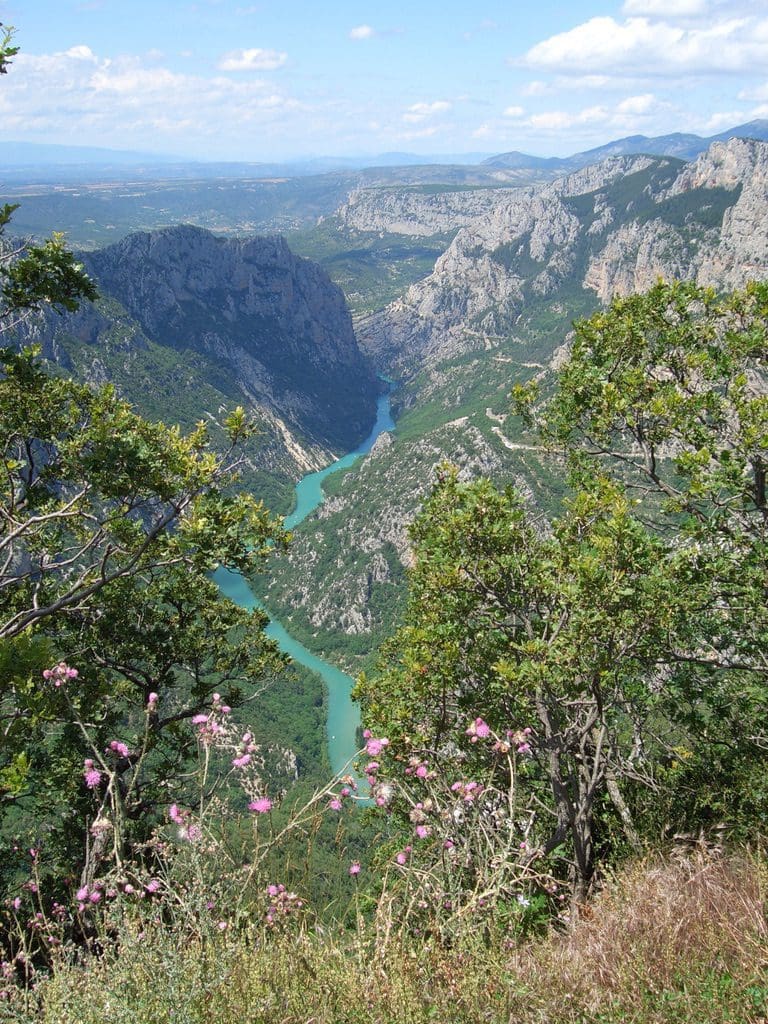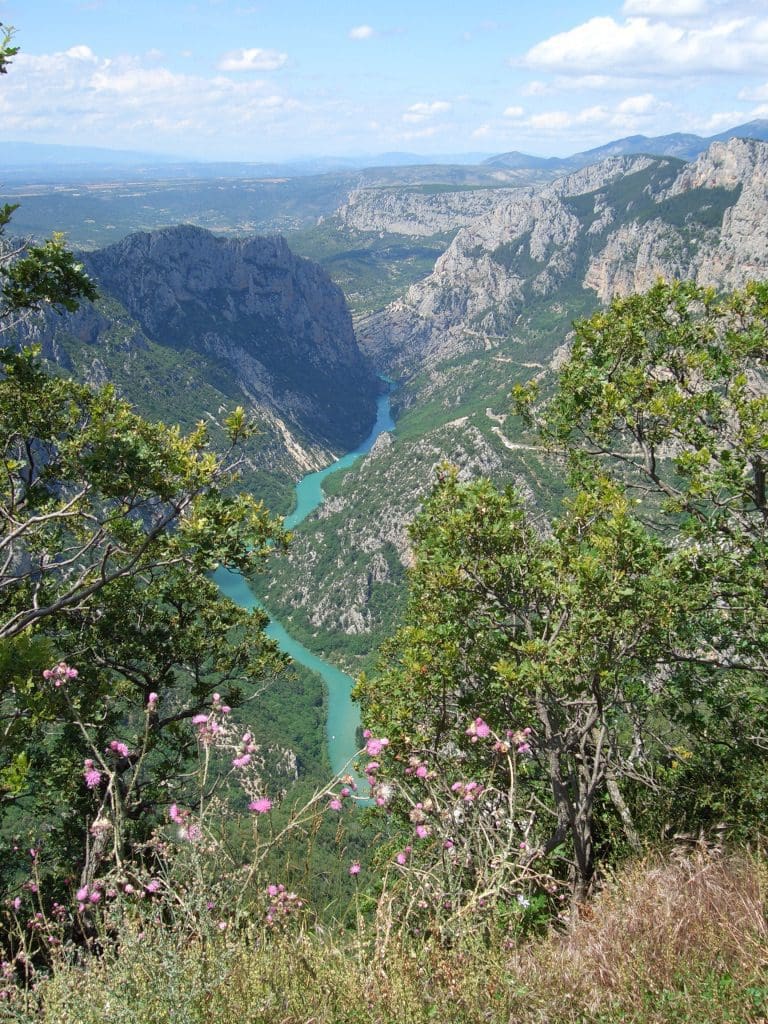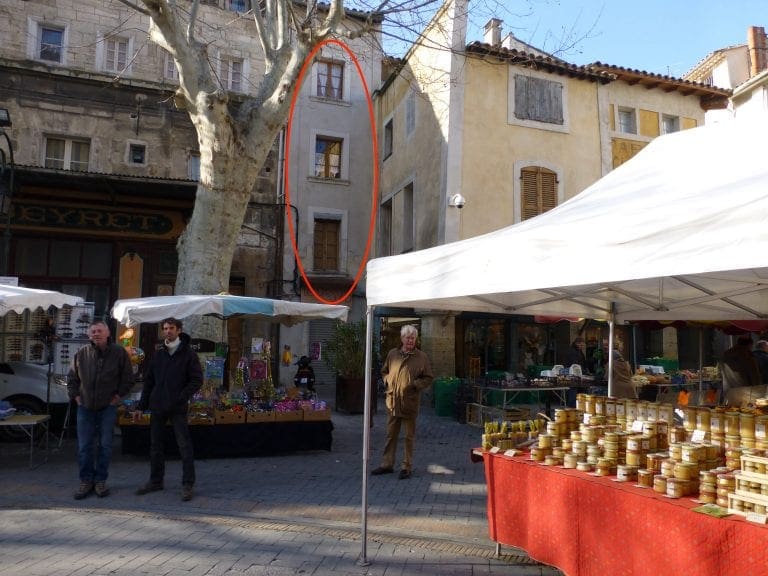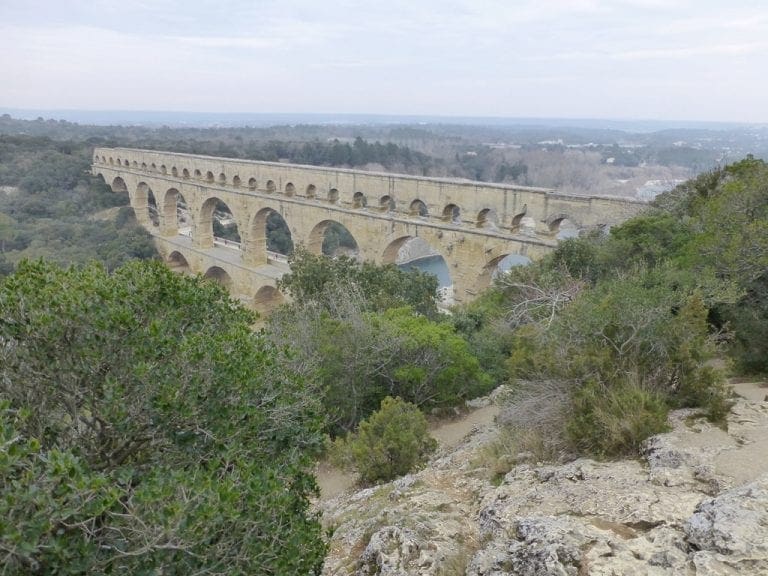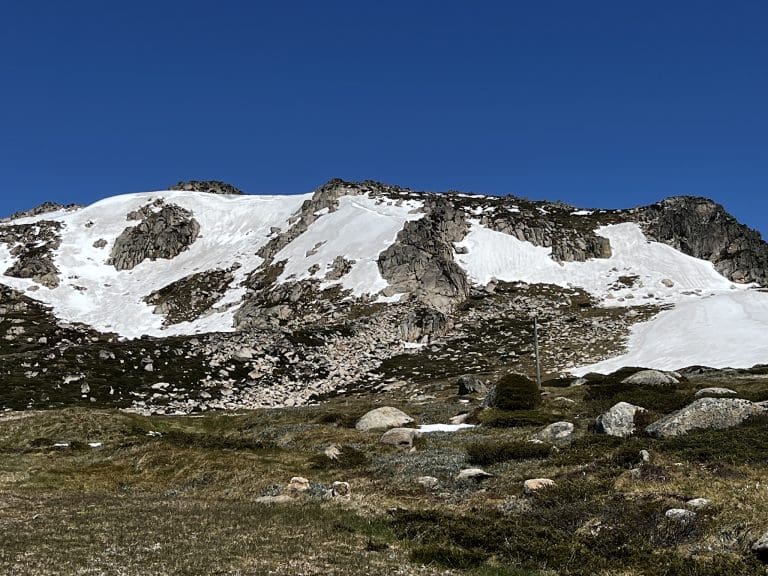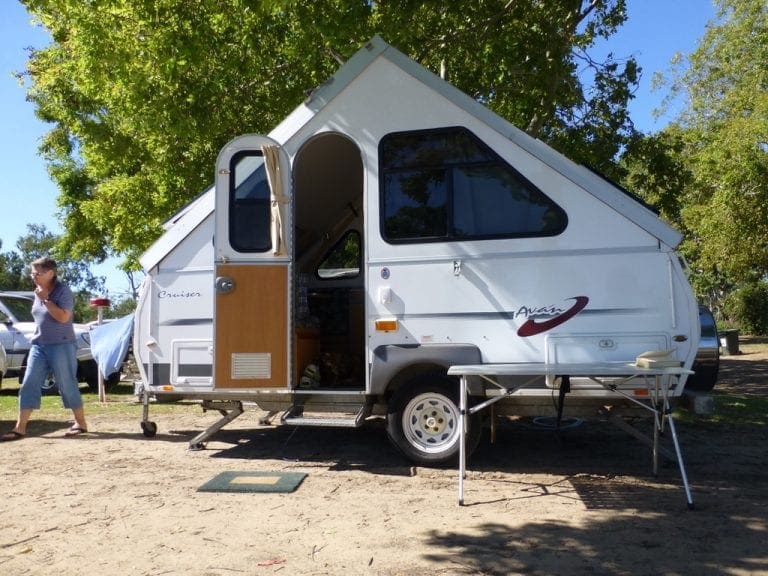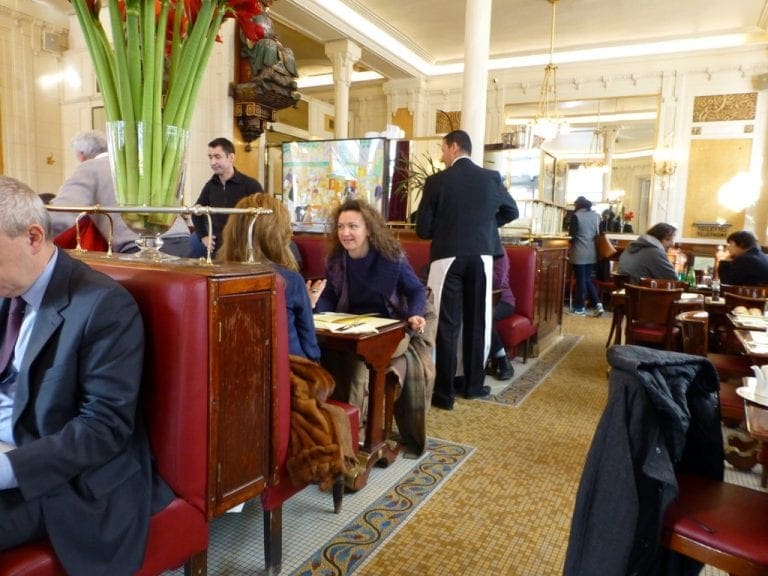Provence, Castellane
29/6 We drove 300 km today, a day of ducts. We drove over the Viaduct du Millau (described above and ultra modern), then drove down the motorway to Montpellier and up the motorway to past Nimes to see the Pont du Gard. This is a roman built aqueduct (built 35 AD) to carry water from a spring to Nimes. Still standing after 2000 years. (For Provence & Castellane slide show click here.)
It is a very hot day – 33C. We have made our way to a campsite in Eastern Provence, immediately south of Mount Ventoux (a famous Tour de France hill) and are trying to sit in the shade. The campground is full of Europeans of all persuasions – most sitting in the sun. Helen has declared Provence to be ‘hot, dusty and dirty’, ‘why would anyone come here?’ Our friendly Dutch neighbour came to say ‘hello’ and how wonderful the weather is. Helen said ‘why do you come to this hot, God-forsaken place’? – woops, not good for international relations.
30/6 A day off. We need these. Reading and washing. There will be no trouble getting the washing to dry here. Very dry and hot, We tried for lunch at a local restaurant but all were shut. There is a wedding in the village and all were involved or attending. Disappointed! It has not helped to improve our rating of this place. We had some of the Roquefort from yesterday and a melon for lunch. (We usually carry a melon for back up emergencies – they are similar to our rock melons and are getting sweeter and more flavoursome as the weeks go by.)
The campground we are at is a 4 star park that got some prize last year. We would not have rated it that high by a long chalk. Crowded with very small ‘pitches’ for tents/caravans/motor homes. Full of Dutch who all appear to yell at each other at the top of their voices. The pitch we are in will just fit the tent and the car. It is by far the smallest we have been on. They gave up with grass a long time ago and have surfaced it with blue metal. That might be ok for motor homes but is not too good under a tent. The amenities block closest to us is the usual communal facility. The urinal is at the front door in a very narrow corridor. It is disconcerting to have a piss with so many people passing to and fro. We have decided that this is probably the worst camp place we have stayed at. Les Verguettes in Villes sur Auzon. For some unknown reason it has received campsite of the year from Dutch TV Campinglife. A real fraud. The Dutch must love it and vote for this rubbish in their droves. When we went to pay tonight, the woman tried to charge us twice for the same night. The pizza we had for tea was only half cooked. We cannot speak too badly of the place. A very pouty Helen and a disgruntled Geoff.
Something on cars. Almost all cars we see are small. Renault, Peugeot and Citroen appear to have about equal market shares. Although there may be more Renaults. The commonest car appears to be a Peugeot 206. The commonest van is a Peugeot Partner – these ubiquitous white vans are everywhere – the workman’s van. Not a ute in sight. There are almost no Prado sized 4 wheel drive vehicles. Small cars for at least two reasons: cheaper to run with the high fuel prices; and necessary to get through the very narrow streets, a larger car just will not fit.
About this way of travelling – car and tent. It works for us. However, the tent is a bit of work and is not the best if it rains. We have been using Camping Cheques Gold Cards where we can. These bring the cost down to 14 euro per night for two people, car and tent/van, and often a good deal. That deal will end 7 July when the school holidays begin here. Most of the campgrounds we have been in also have cabins. These are usually very good and because they have a kitchen as well as bathroom, are possibly a better deal than the local hotels. We think it would be possible to do this trip with a car like Berlingo (maybe a bit smaller) and staying in cabins at campgrounds. The cost would be similar to what we are doing.
1/7 A morning driving east across Provence. Very dry and inhospitable. If the fellow who wrote ‘a year in Provence’ was describing this part, he was writing about a prison sentence. We think the poms (and the Dutch) can have it. (Fortunately, the rest is better.) The vegetation is very scrubby and the gorges make it look very similar to the Blue Mountains. We drove up an amazing pass with near vertical strata (very like Banff) and down a very windy road to Castellane for lunch. This was another 2 star, 4 course meal looking out over the town square. Delightful. We found a small, shady, uncrowded campground.
A comment from Helen – As Geoff has eloquently conveyed, we have not been real impressed for the last couple of days. Both of us were looking forward to Provence and were rather disappointed. However, by the next report, we are back on track and very much enjoying ourselves again – still in Provence but out of the heat of the coastal strip. I think the last sentence of the previous paragraph shows our preferences
2/7 Monday. We began with a flat battery in the car. We got a push start from some nearby Dutch. We’ll have to stop being negative about them. We watched with fascination while the pom next door parked his motorbike on a trailer skeleton and with the push of a button, the trailer appeared. Very convenient.
We drove around the Gorges de Verdon (Verdon not to be confused with Verdun – the WWI battlefields in the north-east of France). These gorges are said in their brochures to rival the Grand Canyon in Colorado. Maybe not that big but extremely good. The round trip of the canyon rim (you cannot drive on the canyon floor) is 140 km. Very windy roads with a lot of traffic – a good percentage of which (Belgians, Dutch) drive in the middle of a narrow road, making it even harder. The scenery is spectacular. The rocks are mainly limestone that has been given a good push and is now standing between 45 degrees and vertical. The gorges cut through this limestone. The caves that would once have lined the stream have long ago collapsed, leaving the stream at the bottom of a canyon 715 m deep. Several canyons making tributaries to the main canyon. Excellent views and truly spectacular. The 140 km took us all day and left us exhausted. We did not get stuck behind cars (which we understand in the height if summer can be a real problem), however, the numerous blind corners, bicyclists, walkers, cars that don’t know their width or how to drive on narrow roads all contributed to a long day.
Helen – As you can see Geoff has done the geologist stuff. I was more fascinated by the vegetation which ranged from pines to succulents. All of it growing in tough, hard conditions. It reminded me of the sandstone areas around Sydney but the different niches were filled by totally unknown plants. The heights of each layer of vegetation were similar. Lots of ground level stuff was in flower and absolutely amazing with the odd patch of wild lavender.
We like this town of Castellane. It is very friendly and about our size. Big cities have their fascinations but parking and getting around can be a hastle.
3/7 A quiet day. A walk to the lavender stall a couple of hundred metres down the road in the am and in the afternoon a walk around the town of Castellane. As usual the old town has been pedestrianised but they have lots of information plaques on the walls about life both modern and historical.
